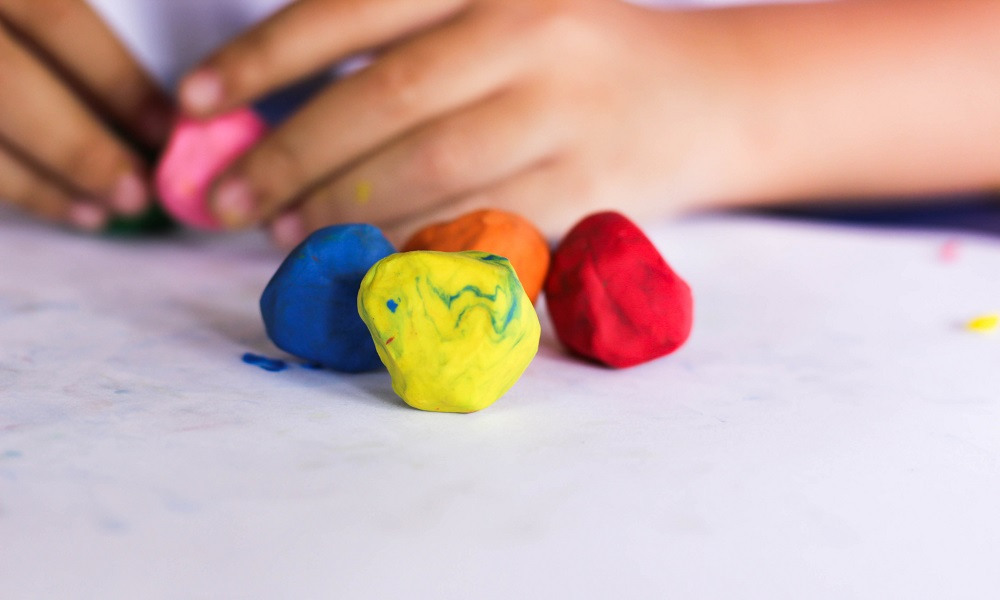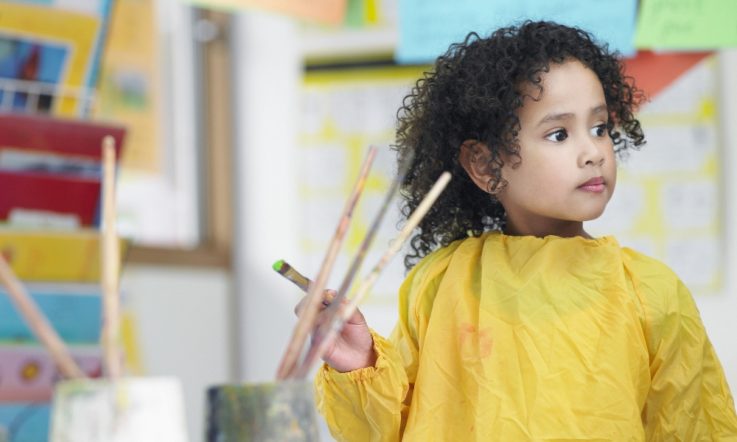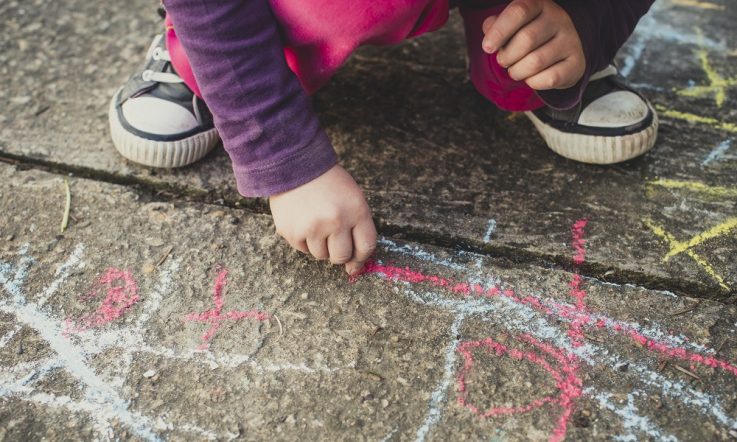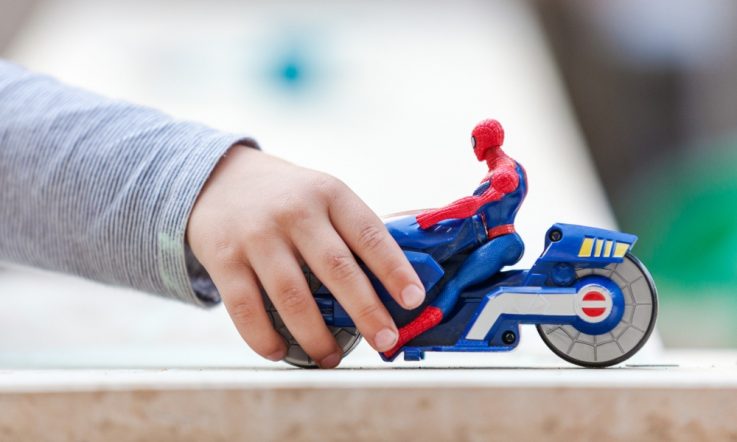The Arts are a required element of teaching K-2 in Australia and coexist with learning in the early years classroom. How can they be implemented in practice?
To explore this, rather than ‘silo' each art form, we use the key elements of the Early Years Learning Framework; Belonging, Being & Becoming (AGDEEWR, 2009) as a way to realise Arts praxis for young children's learning.
Belonging and the Arts
Experiencing ‘belonging' is about knowing where and with whom one belongs (AGDEEWR, 2009). The Arts in practice – music, dance drama, medial arts and visual arts – offer young children (and old) universal languages that connect them with others and bring about a sense of belonging. They have the capacity to communicate complex and sometimes difficult messages by connecting people emotionally, intellectually and also physically in ways that other educational disciplines cannot (O'Gorman, 2014).
Art bears witness to social and cultural traditions that can be shared and understood, building relationships that shape children's identities and their sense of belonging. Belonging begins within a child's family, their cultural group and community. Children's expression of the Arts – when facilitated by educators in supportive learning environments that encourage children to explore, problem solve and create – begin often with representations of belonging to family via visual arts, via role play (drama), music and dance. US educator Dr Victoria Brown (2017) argues that the immediacy, spontaneity, vigour and inventiveness of imagined role play situations can be explored and extended through process drama, identifying issues, events and relationships that convey a child's own experiences of belonging and the belonging of others.
Being and the Arts
‘Being' recognises the importance of the here and now in children's lives (AGDEEWR, 2009). Early learning is not conceptualised as only a preparation for the future. Competency, agency and voice become significant when the child's ‘being' is appreciated via the Arts. Through drawing, painting and clay, children can be seen to be making meaning of the world around them.
Engaging children in the visual arts is not as simple as teaching children to follow a set of directions which result in a stereotypical image (McArdle, 2012). Young children's visual representations act as an important means of communicating; a visible expression of their ideas, thoughts and theories (Robson, 2012).
Children's images afford children a voice. If as educators we are prepared to listen, show genuine interest, respect and create significant dialogue around art making, this voice can be heard. Involving a pedagogy of listening (Rinaldi, 2001), listening to children's thoughts via the arts, legitimises the child's view and who they are now.
Australian artist Ben Quilty (2018) recently published a book of Syrian children's drawings that give voice to their life experiences, acknowledging their agency while powerfully representing their being.
Becoming and the Arts
Using narrative texts as a stimulus point, to further explore learning through the Arts, is a method that allows children to explore who they are as individuals (AGDEEWR, 2009). The Arts give a form of expression, separate to the social construct of literacy, for children to understand their becoming identity (Erikson, 1980). Developing knowledge and understanding of oneself, and others, shapes one's ‘becoming'.
Children (and adults) need tools to comprehend their own capabilities, skills and relationships, to come to terms with the world around them and their place in it (Daniels, Cole, & Wertsch, 2007). The Arts offer an opportunity for inclusive practices and a creative way to explore divergence and difference. Through dramatic play and role play, children can express how they are coming to recognise their becoming identity and the differences they see in others.
The Arts enable children to express, in multiple ways, ideas that words alone cannot communicate. They can also convey ideas that are ‘unspeakable' (Watson, 2017). Dance and movement allow for the expression of inner emotions and turmoil; an outlet and a joy (Davies, 2003). Music gives children an unrestricted voice, not limited by society's norms, and the visual arts allow opportunities to communicate in shape and colour (Wiggins, 2009).
The Arts, as a non-competitive learning form, build collaborative skills, while valuing children's interests, and contribute to the shaping of a child's becoming identity.
Learning and the Arts
So how to implement this in the K-2 classroom is the question that remains. What Arts pedagogies are appropriate?
The first key point is that whilst certain Arts do often commonly use particular pedagogical forms, such as group work, and rehearsal with Drama, there are no set pedagogies specific to the Arts (Roy & Ladwig, 2015). The key is approaching learning from the child's perspective; what skills do they require to access knowledge and understanding (Gupta, 2009). Too often with some learning areas, it is more traditional to provide knowledge leading to skills (Ewing, 2011).
In the Arts there can also be an expectation for skills to develop solely through an activity, yet knowledge, skill instruction and activities all support the learning experience (Schulte & Thompson, 2018). For example, if we want children to make clay monsters for Halloween, the skill of using clay needs to be demonstrated before the praxis of using clay. For younger children, the knowledge behind how the material of clay works is needed, and for more experienced others the purpose of the knowledge, skill or activity is required for engagement. The principles should be to share knowledge, skills, opportunity for activity and significance (Ladwig & King, 2003).
Key to any learning is to make it meaningful, make it inclusive, make it achievable and make it engaging.
References
Australian Government Department of Education Employment and Workplace Relations. (2009). Belonging, Being & Becoming: The Early Years Learning Framework for Australia. Canberra: Commonwealth of Australia.
Brown, V. (2017). Drama as a valuable learning medium in early childhood. Arts Education Policy Review, 118(3), 164-171.
Daniels, H., Cole, M., & Wertsch, J. V. (Eds.). (2007). The Cambridge Companion to Vygotsky. New York: Cambridge University Press.
Davies, M. (2003). Movement and Dance in Early Childhood. Thousand Oaks, CA: Sage Publications.
Erikson, E. (1980). Identity and the Life Cycle. New York: WW Norton & Co.
Ewing, R. (2011). The Arts and Australian Education: Realising Potential. Melbourne: Australian Council for Educational Research.
Gupta, A. (2009). Vygotskian perspectives on using dramatic play to enhance children's development and balance creativity with structure in the early childhood classroom. Early Childhood Development and Care, 179(8), 1041-1054.
Ladwig, J. G., & King, B. (2003). Quality Teaching in NSW Public Schools: An Annotated Bibliography. Sydney.
McArdle, F. (2012). The visual arts: Ways of seeing. In S. Wright (Ed) Children, Meaning-Making and the Arts (2nd ed.). Sydney: Pearson Prentice Hall.
O'Gorman, L. (2014). The Arts and education for sustainability: shaping student teachers' identities towards sustainability. In J. Davis & S. Elliott (Eds). Research in Early Childhood Education for Sustainability: International perspectives and provocations (pp. 266-279) London: Routledge.
Quilty, B. (Ed) (2018). Home: Drawings by Syrian Children. Ferntree Gully, Vic: Random House
Rinaldi, C. (2001). The Pedagogy of Listening: The Listening Perspective from Reggio Emilia. Innovations in early childhood: The international reggio exchange. 8(4), 1-4.
Robson, S. (2012). Developing thinking and understanding in young children: an introduction for students. (2nd ed). New York: Routledge.
Roy, D., & Ladwig, J. (2015). Identity and the Arts: Using Drama and Masks as a Pedagogical Tool to Support Student Identity. Creative Education, 6(10), 907-913.
Schulte, C. M., & Thompson, C. M. (Eds.). (2018). Communities of Practice: Art, Play, and Aesthetics in Early Childhood. New York: Springer.
Watson, K. (2017). Inside the 'Inclusive' Early Childhood Classroom: The Power of the 'Normal'. New York: Peter Lang.
Wiggins, J. (2009). Teaching For Musical Understanding. Oakland, CA: Centre for Applied Research in Musical Understanding.
Karen Watson and David Roy say the key to any learning is to ‘make it meaningful, make it inclusive, make it achievable and make it engaging’.
Take some time to reflect on a lesson or unit of work that you’ve recently taught. How successful were you in meeting these four points?



